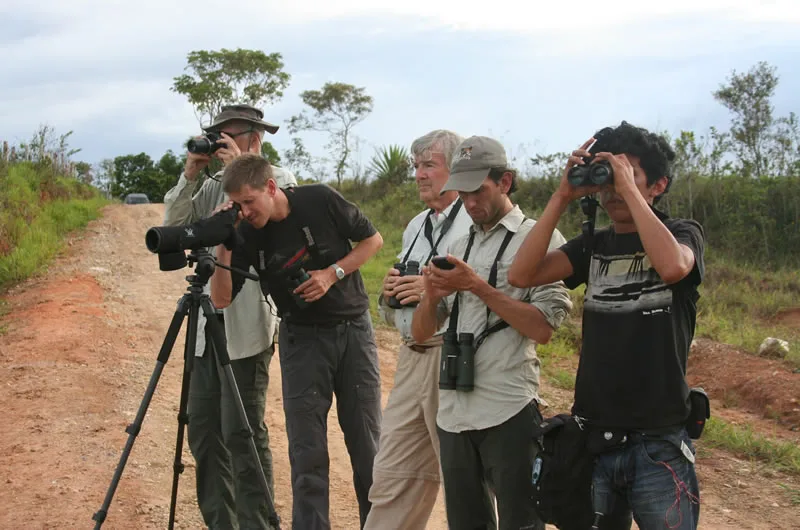10 Days Birding Tour North Bengal & Sikkim FROM NJP india
Sikkim, renowned as the land of blooming rhododendrons, offers a breathtaking spectacle of mountains adorned with vibrant rhododendrons and abundant orchids against the backdrop of snow-capped peaks. The majestic Khangchendzonga dominates the skyline under the serene blue skies, while Buddhist monasteries imbue the scenic landscapes with spiritual allure in this biodiverse state. Home to over 4000 species of flowers and 700 species of fauna, including the iconic Red Panda, Clouded Leopards, Musk Deer, Flying Squirrel, and Himalayan Black Bear, Sikkim boasts a rich natural heritage. Its 400 species of orchids and 30 species of rhododendrons further enhance its natural beauty, making it a haven for bird enthusiasts with more than 729 bird species, including endangered ones like the satyr tragopan. journey from West Bengal, where forests cover around one-fifth of the state, we encounter 15 wildlife sanctuaries and 5 national parks dedicated to protecting endangered species such as tigers, Indian elephants, Indian rhinoceros, leopards, crocodiles, Gangetic dolphins, and a myriad of avian species, including rare finds like the fire-tailed Myzornis and Brown Parrotbill. Throughout the trip, we ensure comfortable accommodations nestled amidst stunning environments, allowing ample time to immerse in the beauty of the surroundings and encounter rare flora and fauna. With carefully planned routes, including short, gentle walks, our journey promises an unforgettable exploration of nature’s wonders.

India Birding Tours Packages: Birding in India / Best Bird Watching Tours Guide in India
Featuring:
Mahananda, Lava, Rangit Valley, Varshey ,Ravbangla , Darjeeling and Sandakphu.
Birding Important Information
Sikkim is a region with restricted access, allowing tourists a 15-day stay upon applying for permission alongside their India visa. This permission is granted by stamping the India visa. Nestled within the Himalayas, Sikkim, along with the neighboring mountains of Darjeeling and Kalimpong, creates a continuous mountain mass, cradling the valleys of the Teesta and Rangit Rivers. Surrounded by the Himalayan Kingdoms of Nepal, Bhutan, and the Tibetan uplands, this area boasts one of the most impressive ranges of snow-capped peaks globally, including the Singalila and Chola Ranges, reaching a maximum elevation of 8859 meters. The Himalayas encircle this region on three sides, shaping an immense amphitheater that appears to have been carved out of the mountains and slopes gently southward towards the plains of North Bengal. Dr. J. Hooker conducted the first survey of this region in the mid-19th century, and his “Himalayan Journal” remains an invaluable reference.
Spanning less than 10,000 square kilometers, this area is incredibly rich in terms of its flora, fauna, and cultural heritage. With an average annual rainfall of 348 centimeters, it is the most humid part of the Himalayas, with a dry season from November to April. Due to the vast altitude range, from nearly sea level to over 8000 meters, the flora transitions from subtropical to arctic. Sikkim boasts a remarkable botanical diversity that is unmatched in such a compact region anywhere in the world, with over 4,000 plant species. Orchids and Rhododendrons are the pride of Sikkim, with around 600 orchid species in the lower regions and 30 species of Rhododendrons flourishing at elevations above 3000 meters. In the higher regions above 3500 meters, a breathtaking display of wild daisies, primulas, impatiens, and more occurs during the brief summer months (May to August). Even rocks and stones are adorned with lichen and moss, creating a vivid tapestry of hues. The altitudinal variation is responsible for the incredible variety and abundance of resident birdlife in this region, making it one of the world’s richest areas in terms of its size. Dr. Salim Ali, one of India’s eminent ornithologists, has documented 527 species of resident birds here, and there are also migratory birds. It is estimated that over 30 percent of the Indian Subcontinent’s bird species can be spotted in this region. This birding tour is thoughtfully crafted to allow you to explore altitudinal zones ranging from 100 meters to 3050 meters, providing a firsthand experience of the astounding biodiversity and ample birding opportunities. We will visit carefully selected “hot spots,” including the Mahananda Wildlife Sanctuary (100-300 meters), Lava Reserved Forests and the fringes of Neora National Park (2000-2700 meters), the Rangit River Valley (300-1200 meters), Hilley forests and the Vershay Rhododendron Sanctuary (2300-3050 meters), and the Sandakphu Ridge at 3600 meters.
Bird Watching In Sikkim & North Bengal | Birding Holiday Packages from NJP
Birding In Sikkim | Wildlife Tours In India – Sikkim Birding Tours: Premium Travel Agency
North Bengal and the Dooars, along with Sikkim, boast rich biodiversity, attracting birdwatchers and photographers. Neora Valley National Park in West Bengal houses the rare Himalayan Red Panda and various mammal species. Sikkim, a small but diverse state in the Himalayas, is a haven for over 550 bird species including the Satyr Tragopan and Tibetan Snowcock. Its scenic landscapes, monasteries, and warm hospitality make it an ideal destination for adventurers and nature lovers alike.
10 Days Birding Tour North Bengal & Sikkim Itinerary –
Day 01: – Bagdogra- SiliguriTransfer to Delhi airport and fly to Bagdogra airport in North Upon arrival, at Bagdogra airport, around mid day, you will be met by your birding guide / escort. From the airport we will transfer to Hotel Sinclairs.- one of the best hotels in Siliguri. In the afternoon, day light permitting, drive to Mahananda Wild Life Sanctuary for birding. Overnight at hotel Cinderella/Sinclairs Located just outside Siliguri astride the Mahananda river, the Mahananda Wild Life Sanctuary is well known for its large population of Elephants. As a result it has yet to be fully explored by birders. T he deciduous forests and riverine belt provides habitat for a rich variety of birds in the sanctuary. The bird list comprises 326+ species.
Day 02: Siliguri_ Mahananda WLS – SiliguriFull days birding at Mahananda WLS core area and noon travel to Lava and overnight at Local Guest house
Day 03: Lava Birding drive through Neora National Park. Overnight At Lava,(specially for Satyr Tragopan) Local guest house.
Day 04: LavaBird along an isolated forest trail for 05-06 hrs. Overnight at Lava local guest house.
Day 05: LavaBird along an isolated forest trail for 05-06 hrs. Overnight at Lava local guest house.
Day 06: Lava – Ravbangla(South Sikkim)Morning birding around Lava. After lunch birding drive 06 hrs to Ravbangla. Overnight at Ravbangla. Kewzing Home stay.
Day 07: Ravbangla-Maenam Wildlife Sanctuary-RavbanglaFull days birding at Maenam wildlife Sanctuary(Specially for Satyr Tragopan) Overnight at Ravbangla. Kewzing Home stay
Day 08: Ravbangla- DarjeelingDrive 06 hrs to Darjeeling. The route is along the scenic Rangit Valley till Teesta Bazar. Therafter we climb through scenic tea gardens to the Darjeeling Ridge. Overnight at Hotel.
Day 09: Morning Visit Tiger Hill for birding and after that at leisure for sightseeing around Darjeeling. Overnight at hotel.
Day 10: Darjeeling-Bagdogra-Delhi Drive to Bagdogra in 03 hrs to board your flight to Delhi or Kolkata. TOUR ENDS.
What is included in your price –
- Reception at Airport on arrival and send off.
- Accommodation on twin share with all meals, as given in the itinerary.
- On birding treks, all camping arrangements to include all meals, 3-4 man tent shared by 02 persons, sleeping mats, dining tent, toilet tents, camp staff, porters and local guide. Please bring your sleeping bags (we can provide on request)
- Exclusive transport for all transfers and birding trips as per itinerary: – Hard top jeep 08 seater to be shared by 04 plus guide. Park Entry fees
- Birding guide
Price does not include –
- Air fare
- Personal expenses, bar, Mineral water, laundry, telephone, and medical expenses
- Insurance
- Camera fees at National Parks – where applicable
- Single room supplement if required.
- Travel insurance of any sort.
- Goverment Service Taxes
CONTACT US
